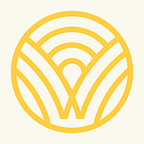2020 PAEMST Spotlight: Amy Peterson, NBCT
Amy Peterson, NBCT teaches 8th Grade Science at College Place Middle School in the Edmonds School District
Check out the rest of our PAEMST Spotlight interview series here.
What is one of your favorite lessons to teach and why?
One of my favorite lessons is using a Newton’s cradle to help students make predictions and define the term momentum. Most students have experiences with momentum and use the word, but struggle to explain what it is and what factors affect momentum.
I love hearing students explain what is going to happen next by applying their life experiences, their excitement when their prediction is correct, and seeing them go back to their previous observations and reevaluate the pattern when their prediction wasn’t correct.
What is one concept your students struggle most to understand and how to you try to address this struggle?
Students often struggle to understand that seasons are caused by Earth’s tilted axis, not distance from the sun. To help students understand seasons, we draw a variety of diagrams helping students visualize Earth’s orbit around the sun and direct and indirect light hitting Earth’s surface. Students graph how the hours of daylight change throughout the year and compare times in the Northern Hemisphere, the Southern Hemisphere, and on the Equator. Students collect data comparing how the area of illumination changes with the angle of sunlight. They also use simulations and readings to collect evidence about seasons in different places around the world. I also provide a variety of teaching methods to make learning accessible for all students. This bridges the gap between the various learning styles that are present in the classroom.
Where do you see more opportunity for collaborating with other disciplines to teach math or science?
Each discipline asks students to support a claim with evidence and reasons. This is a great opportunity for all teachers to collaborate around common academic language, discuss how the same word might mean something different in a different discipline, and help students make connections across disciplines.
Analyzing current events happening around the world is another great way for teachers to collaborate across disciplines and help students become informed citizens of their community. In the Puget Sound we are always hearing about the declining Southern Resident Killer whales. In Science, students could study the ecosystem of the Puget Sound. Social Studies teachers could have the students study the Boldt Decision, the history that led to that decision, and what it currently means for the fishing industry. In Math, students could analyze data about salmon populations, calf survival rate, and levels of toxins in the Puget Sound. English teachers could provide students the opportunity to share their voice with their community by writing a blog post, editorial, and/or letter to a government official.
Teacher collaboration across disciplines enables students to gain a deeper understanding of concepts and build a stronger foundation of learning for future applications.
What are some of the jobs and pathways you are most excited to see your students preparing for?
I would love my students to find jobs where they can help solve problems we are facing around the world. I want my students to find something that excites them, challenges them, and enables them to make their own positive mark in our world. That could be designing a more efficient airplane engine, finding a cure to cancer, researching the effects of commercial fishing, advocating for renewable energy, helping everyone have access to clean drinking water or designing safer cars.
What experiences do you think best prepared you for your teaching career?
Reflecting on my years as a student helped prepare me for my teaching career. I saw a wide variety of teachers and teaching styles. I experienced feeling safe to say “I don’t understand.” in some classes while in others I was scared to talk. Some teachers made me feel cared for as a person and encouraged me, while others didn’t know my name. In college I tutored my peers and was driven to find a way for each person to understand the material and feel successful. I learned the importance of having my own deep content knowledge so I could present the content in different ways. Tutoring other students in college started my understanding of different learning styles that I use every day in my classroom.
How do you keep current on emerging trends in your field? Any publications, blogs, etc. that you love to follow for interesting research or stories?
To keep current on emerging trends in science I research: what problems scientists are trying to solve, what changes are happening around the world and why, what scientists are researching, what the benefits and consequences of human involvement are, what new discoveries have been made, and how changes in technology have enabled advancement. I follow Advancing Ambitious Equitable Practices — a group of teachers, researchers, and professors — to find interesting science phenomena and articles. I encourage my students to bring in articles or share videos with me about current science ideas they find interesting. This is a great way of incorporating student interest into our class.
The Presidential Awards for Excellence in Mathematics and Science Teaching (PAEMST) is the highest recognition that a kindergarten through 12th grade science, technology, engineering, mathematics, and/or computer science teacher may receive for outstanding teaching in the United States. Awardees will be announced this spring.
